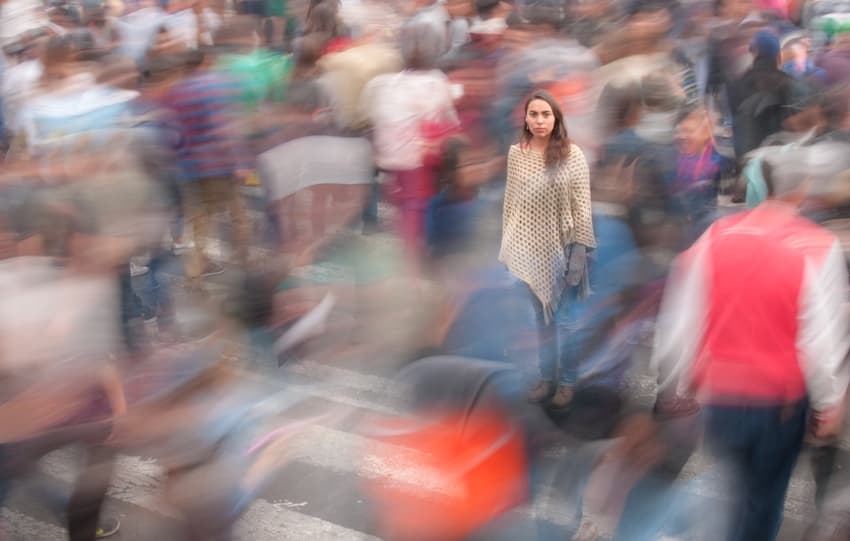Where in Switzerland is the population growing (and where is it shrinking?)

The Swiss population has increased by 12 percent in the past decade, but not equally throughout the country: in certain municipalities, the number of inhabitants has decreased.
Switzerland has recorded a milestone in 2023: its population reached a 9-million mark.
And this growth is not about to slow down: demographic forecasts indicate that the country's population could swell to 10 million people in the coming years — mostly due to increased immigration rates as well as higher life expectancy.
READ ALSO: What does it mean for Switzerland to have a population of 9 million people?
However, the population has not increased equally throughout the country — in some regions, it fell more or less substantially.
It has dropped in 316 municipalities (out of the total of about 2,200 in total). In nine others, the numbers have remained the same.
Which places have recorded the highest population growth?
Based on the 2022 numbers from the Federal Statistical Office (the latest figures available to date), the most spectacular increases happened in small villages rather than large cities.
This is a surprising development, as urban centres are commonly thought of as ‘people magnets’ due to employment and other opportunities.
In fact, the vast majority of foreign nationals settle in or near urban centres rather than in rural areas.
READ ALSO: Where do Switzerland’s foreigners all live?
Small communities, however, offer more and cheaper housing, which is an appealing alternative to congested and expensive cities, and may explain why so many people move there.
For instance, population in the the village of Weiach (canton Zurich) had grown by 110.4 percent from 2010 to 2022, going from 987 to 2,077 inhabitants.
In the second and third place are Vaud communities of Roche and Bettens, where the number of residents grew, within the same time frame, by 93.8 and 91.7 percent, respectively.
However, some cities have also seen population spurts, though not as dramatic as the above-mentioned villages.
Zurich, for example, recorded an increase of 14.7 percent, followed by Lausanne (14 percent), Sion (12.6), Geneva (8.7percent,) and Fribourg (7.9 percent).
Where have the population numbers dropped?
The decline has been sharpest in Jura, the north of the canton of Neuchâtel, Haut-Valais, Graubünden, Ticino and part of central Switzerland.
In terms of municipalities, the biggest decrease was experienced by Cerentino (Ticino), where the population fell by 40 percent in the last decade — from 60 to 36 inhabitants.
Next is Tujetsch (Graubünden), which recorded a 31.9-percent population loss, from 1,732 to 1,180 people.
In the third place is Bellwald (Valais), where the number of inhabitants dropped by 26.5 percent, from 460 to 338 people.
Comments
See Also
Switzerland has recorded a milestone in 2023: its population reached a 9-million mark.
And this growth is not about to slow down: demographic forecasts indicate that the country's population could swell to 10 million people in the coming years — mostly due to increased immigration rates as well as higher life expectancy.
READ ALSO: What does it mean for Switzerland to have a population of 9 million people?
However, the population has not increased equally throughout the country — in some regions, it fell more or less substantially.
It has dropped in 316 municipalities (out of the total of about 2,200 in total). In nine others, the numbers have remained the same.
Which places have recorded the highest population growth?
Based on the 2022 numbers from the Federal Statistical Office (the latest figures available to date), the most spectacular increases happened in small villages rather than large cities.
This is a surprising development, as urban centres are commonly thought of as ‘people magnets’ due to employment and other opportunities.
In fact, the vast majority of foreign nationals settle in or near urban centres rather than in rural areas.
READ ALSO: Where do Switzerland’s foreigners all live?
Small communities, however, offer more and cheaper housing, which is an appealing alternative to congested and expensive cities, and may explain why so many people move there.
For instance, population in the the village of Weiach (canton Zurich) had grown by 110.4 percent from 2010 to 2022, going from 987 to 2,077 inhabitants.
In the second and third place are Vaud communities of Roche and Bettens, where the number of residents grew, within the same time frame, by 93.8 and 91.7 percent, respectively.
However, some cities have also seen population spurts, though not as dramatic as the above-mentioned villages.
Zurich, for example, recorded an increase of 14.7 percent, followed by Lausanne (14 percent), Sion (12.6), Geneva (8.7percent,) and Fribourg (7.9 percent).
Where have the population numbers dropped?
The decline has been sharpest in Jura, the north of the canton of Neuchâtel, Haut-Valais, Graubünden, Ticino and part of central Switzerland.
In terms of municipalities, the biggest decrease was experienced by Cerentino (Ticino), where the population fell by 40 percent in the last decade — from 60 to 36 inhabitants.
Next is Tujetsch (Graubünden), which recorded a 31.9-percent population loss, from 1,732 to 1,180 people.
In the third place is Bellwald (Valais), where the number of inhabitants dropped by 26.5 percent, from 460 to 338 people.
Join the conversation in our comments section below. Share your own views and experience and if you have a question or suggestion for our journalists then email us at [email protected].
Please keep comments civil, constructive and on topic – and make sure to read our terms of use before getting involved.
Please log in here to leave a comment.